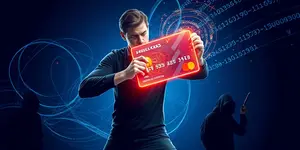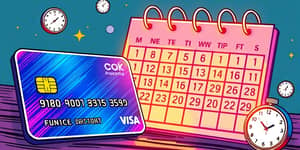
In an era where plastic reigns supreme, understanding how credit cards shape our financial decisions is vital. Overspending and consumer debt often start with a simple swipe.
When we part with cash, we experience a tangible sense of loss. This phenomenon, known as the pain of payment, acts as a psychological brake on our spending. Handing over bills or coins triggers an emotional signal of sacrifice, making us think carefully before parting.
In contrast, credit cards mute this sensation. A landmark MIT study using fMRI revealed that swiping a card lights up the brain’s striatum—its reward center—much more than spending cash. Surprisingly, activation levels didn’t correlate with price, meaning the emotional value of a credit card dollar can be nearly half that of a cash dollar.
Credit cards create a temporal gap between the moment of purchase and the point of payment. This separation of purchase and payment makes spending feel less immediate and less expensive.
Researchers describe this as payment coupling: when you delay the discomfort of paying, you anesthetize the sting of parting with money. A monthly statement bundles hundreds of transactions together, so each purchase loses its distinct emotional impact. By the time the bill arrives, individual buys are abstracted into a single number that feels easier to swallow.
Credit cards offer instant gratification without waiting. You don’t have to save for weeks or months; a swipe fulfills desires instantly. This immediacy fuels impulsive buying, especially under emotional triggers like stress or boredom.
The ease and abstraction of credit card payments amplify the dopamine rush associated with new purchases. Consumers report more pleasure at the checkout and less pain when the months’ end statement arrives.
Several mental shortcuts make credit spending a slippery slope. Present bias drives us toward immediate rewards, undervaluing future consequences. We crave the new gadget now, not recognizing the burden of debt tomorrow.
Optimism bias further distorts our judgment. We convince ourselves that next paycheck or bonus will cover the balance, ignoring monthly interest and fees. This denial grows until the debt pile becomes overwhelming.
We’re also influenced by peers and media. Social proof and FOMO—fear of missing out—push us to match lifestyles we see online. When influencers flaunt luxury purchases, cards make it easy to emulate them.
Gamification features in card apps—points, cashback, reward tiers—act like an addictive game loop. Each purchase brings you closer to a bonus, further suppressing reluctance. These incentives are powerful motivators that can encourage spending beyond one’s means.
Data speaks volumes: shoppers can spend 12 to 100 percent more when they pay with a card instead of cash. In one auction experiment by MIT, people bid more than twice as much on tickets when they used credit cards versus cash, valuing a credit card dollar at roughly 50 cents emotionally.
Studies on grocery shopping show credit card users buy more unhealthy snacks and impulse items compared to cash customers. Even the context of the purchase—online versus in-store—further accentuates these differences.
Overspending on credit cards births compounding interest and fees that can snowball into unmanageable debt. Emotional lows and buyer’s remorse often follow impulsive buys. When the monthly statement finally arrives, the pain of payment hits in full force.
Debt burden can lead to anxiety, sleepless nights, and strained relationships. Financial satisfaction tends to be lower among heavy credit card users compared to those who rely on tangible payment methods.
Awareness is the first defense. Start by tracking your credit transactions in real time, and reflect on emotional drivers behind each purchase. Budgeting apps and spending reminders can help you see the full picture before deciding.
Shifting some purchases back to cash can restore the sense of physical value of money, making each expense more meaningful. Over time, this builds mindfulness and reduces impulsive decisions.
As society moves toward digital payments, these psychological effects will intensify. Building digital literacy and self-awareness around spending habits is crucial for financial wellbeing.
By recognizing the psychological tricks credit cards play on our brains, and employing practical strategies to mitigate them, we can reclaim control over our finances. Ultimately, understanding the hidden dynamics of plastic spending helps us cultivate healthier habits and more intentional lives.
References













